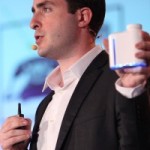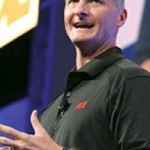Steven Krupp is a Senior Managing Partner at Decision Strategies International (DSI), a firm devoted to help leaders become more strategic and organizations more adaptive. DSI provides executive development, strategy consulting, and organization transformation to the world’s largest organizations in six continents. DSI offers solutions that equip executives to implement dynamic strategies for an uncertain world, and designs adaptive organizations that flex to rapidly-changing demands.
Dr. Krupp is a renowned thought leader on strategic thinking and agility. His new book, Winning the Long Game: How Strategic Leaders Shape the Future, provides a leadership roadmap to navigate today’s volatile environment. He has also published a number of articles including: “Strategic Leadership: The Essential Skills” in Harvard Business Review, “The Power of Asking Pivotal Questions” in MIT Sloan Management Review, “Competitive Anticipation: How To Enhance Leadership By Sharpening Your Competitive Edge” in Leadership Excellence; “How To Rally Your Team Around A Strategy” in Inc.com; and “Women as Strategic Leaders: The Need and the Critical Skills” in American Management Association’s MWorld. Other publications Steve has been published in are: Harvard Management Update, CLO Magazine, Talent Management Magazine, Wall Street Journal, and Philadelphia Business Journal.
Dr. Krupp and his DSI colleagues help build capabilities for strategic thinking, change, decision-making, collaboration, customer centricity, and innovation required to shape the future for global organizations. Clients include AIG, Asta Zeneca, Bank of America, BlackRock, British Petroleum, CEMEX, Comcast, Deutsche Bank, Genentech, General Electric, GlaxoSmithKline, Lenovo, L’Oreal, Lockheed Martin, Merck, Microsoft, PepsiCo, Pfizer, Royal Bank of Scotland, Sanofi Aventis, Thomson Reuters, Total, and Transocean.
Before joining DSI, Dr. Krupp was a Senior Partner at Oliver Wyman and the Senior Managing Vice President at Right Management Consultants, where he led the human capital consulting business for the Americas. He holds a Ph.D. from Temple University in Organizational Development.
Steve Krupp
On the show, Steven spoke about innovating in the current world, which is faster moving, and faster changing, than ever before. He discussed innovation using the example of Tesla, the electric car company that released its patents to anyone who wants them in pursuit of building an ecosystem for electric vehicles, which founder Elon Musk believes Tesla will be able to dominate. Krupp said that in an uncertain world, a company need to takes bets like an electric car, some of which may fail, but some of which may redefine industries, and smart companies are defined by learning from the bets they take and having an excellent feedback cycle. An example he used is the rise of the company Spanx, founded by Sara Blakely.



















